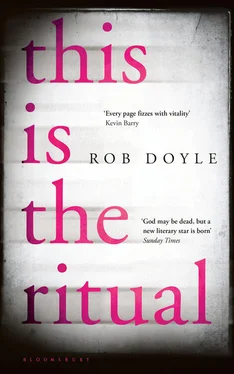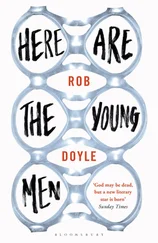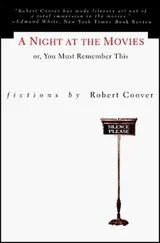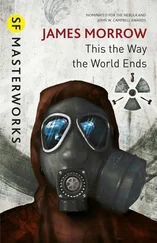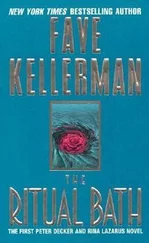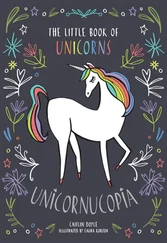Rob Doyle - This is the Ritual
Здесь есть возможность читать онлайн «Rob Doyle - This is the Ritual» весь текст электронной книги совершенно бесплатно (целиком полную версию без сокращений). В некоторых случаях можно слушать аудио, скачать через торрент в формате fb2 и присутствует краткое содержание. Год выпуска: 2016, Издательство: Bloomsbury Publishing, Жанр: Современная проза, на английском языке. Описание произведения, (предисловие) а так же отзывы посетителей доступны на портале библиотеки ЛибКат.
- Название:This is the Ritual
- Автор:
- Издательство:Bloomsbury Publishing
- Жанр:
- Год:2016
- ISBN:нет данных
- Рейтинг книги:5 / 5. Голосов: 1
-
Избранное:Добавить в избранное
- Отзывы:
-
Ваша оценка:
- 100
- 1
- 2
- 3
- 4
- 5
This is the Ritual: краткое содержание, описание и аннотация
Предлагаем к чтению аннотацию, описание, краткое содержание или предисловие (зависит от того, что написал сам автор книги «This is the Ritual»). Если вы не нашли необходимую информацию о книге — напишите в комментариях, мы постараемся отыскать её.
This is the Ritual — читать онлайн бесплатно полную книгу (весь текст) целиком
Ниже представлен текст книги, разбитый по страницам. Система сохранения места последней прочитанной страницы, позволяет с удобством читать онлайн бесплатно книгу «This is the Ritual», без необходимости каждый раз заново искать на чём Вы остановились. Поставьте закладку, и сможете в любой момент перейти на страницу, на которой закончили чтение.
Интервал:
Закладка:
Anus — Black Sun
I found the video in the small hours, lodged in the murky peripheries of a horrendous porn site, the kind set up by Ukrainian deviants and then abandoned, forgotten, left to fend for itself in the wastelands of cyberspace. A kind of obscene and feral orphan, roaming the void, howling in abjection.
I had come home from a warehouse party and was off my face. I don’t know what kind of craving was in me that night. Restlessly I clicked through a series of conventional porno clips, leaving each one behind after a few seconds. Nothing was enough; I wanted something harder. I clicked on links that led to links that led to links — the infinite nexus of the internet, like the fabled Tora Bora caves that Bin Laden was said to have haunted.
The video I eventually uncovered, I have never forgotten. I clicked the flesh-filled thumbnail to begin streaming, noticing with surprise that the clip lasted forty-three minutes.
On the screen, in a window surrounded by ads so vile I felt soiled whenever my vision strayed to them, there was an anus, in close-up. It did not look dissimilar to the anal close-ups common in standard porn clips. Yet this one did not move. It was not a still image, however: there was a constant, subtle shifting of pixilation, and the low hum of background ambience — someone was filming the anus. My jaws gurning, I gazed uncomprehendingly at the gaping aperture nestled between taut buttocks. It was a pert anus, slightly strained, as if the woman (it was clearly feminine) was on all fours. But that was it. No penetration, no other organs, no agent of pleasure or violation. And no narrative — not even of the ultra-minimal variety favoured by modern pornographers, in which all extraneous details of character, plot and setting are effaced, leaving only the pure event of organ-in-organ-in-motion, and the hyperbolic wails of phantasmagorical desire.
An anus, nothing more.
I tried to skip ahead but the video would not allow it. So, I let it play on, and watched, and waited. Nothing happened. Yet, as I watched, I began to feel a change taking place, not in the image onscreen, but in my perception, in myself. It was akin to the onset of a trance. Devoid of all context, even that of the body to which it belonged, the anus began to assume an abstract quality. It became unmoored from its functionality, from its historicity, from all sense of reference. It was neither arousing nor repulsive. I am tempted to suggest an affinity with Kant’s ‘thing-in-itself’. In rapt free-association, I began to see in the anus intimations of a sublime geometry, of astronomy, of black holes, galaxy clusters, the swirl of incipient being-in-the-void which is how I envision the cosmic birth. I saw the sun, the black sun shining on a hazed primordial scene; I saw the solar eye, a god of war and carnage sucking everything into itself and rendering being as non-being, matter as void, darkness as light and light as darkness; I saw the all-seeing eye, the third eye of Shiva, the black core of the earth, the infinite sphere of Pascal’s nightmares, the silent portal wherein each man, in terror, must confront himself. The abyss from which all things arise and to which all things must return.
Twenty-eight minutes had passed. I realised this with some surprise — my subjective sense of time had fallen away. The screen: still no change, no development. Only the serene and gaping anus, and the soothing lull of ambient sound, like closing one’s eyes in an airport. I was awed, and somehow fearful. Scanning myself for the cause of my unease, I realised I was apprehensive that something sudden and monstrous would happen to the anus. I thought of Andy Warhol’s film Empire , in which we see nothing but the Empire State Building, from a static viewpoint, in real-time over the course of many, many hours: there is a celebrated moment in that film when, suddenly, after an immense period of monotony, all the lights in the building are turned on at once — a sublime and whimsical moment, indeed a moment of madness, and the severe freedom of madness. What if some surprise lay ahead in this bizarre, unearthly, and, it had to be said, beautiful video that I was watching? Perhaps the film-maker — the man behind the camera — was a sadist, luring me into a trance of vulnerability before unleashing a sight so horrific, I would be traumatised for ever, left pallid and mumbling, fearful of all sex, all anuses.
I commanded myself to become calm. I would watch the video to the end, come what may. Having resolved thus, I began to relax. And nothing happened — there was no Empire moment. Just an anus on screen, in real-time, close-up. Once more I began to recognise the strange beauty of the film, though I could not re-attain the state of transcendent resonance I had experienced before my anxieties took hold.
After forty-three minutes, the video ended, as abruptly and inexplicably as it had begun. I shut down my laptop and went to bed, no longer in thrall to fevers of drug-inflamed lust. I have since tried to find the video again, but even the degrading website where I saw it eludes me. I suspect it has been deleted; or rather, that it is still there, but invisible now, floating in the cybernetic mists, a kind of ghost-ship.
On Nietzsche
Some time ago, as my twenties drew to a close, I became filled with an overwhelming desire to write a book about Friedrich Nietzsche, whose work had fascinated me since I’d first read him at age nineteen, exhilarated by the grandeur, strangeness and brilliance of his thought. I can see now that the desire to write a book about Nietzsche disguised a deeper, more personal need: to confront and drive out the sense of total futility that had pervaded my life and thoughts for more than a decade, and had driven me to a despair so chronic and total it was no longer even perceptible. By way of a protracted and intensive engagement with the work of Nietzsche I hoped to determine, once and for all, whether there was hope of ever forging a deeper, more sustaining sense of purpose in a world which, it seemed to me, had lost its vital illusions, its grand hopes and its narrative direction.
Most people who decide to write a book about Nietzsche or any philosopher will probably do so through the university system. And this is what my remaining academic acquaintances urged me to do, one former professor back in Dublin even offering to oversee my doctoral thesis. However, my desire to write about Nietzsche arose alongside another, equally strong desire: to travel, to move, to be elsewhere. I decided I would leave London at the soonest possible moment, in the company of my girlfriend Natasha; I would cram my backpack with books by and about Nietzsche, and work while on the move. Eventually I would stop in some attractive city or town — possibly Turin, where Nietzsche spent his last productive years before collapsing into insanity — and begin refining the notes I’d have made into the first draft of a book.
It was not, however, possible for Natasha and me to leave London immediately. It would take us, Natasha calculated, another four months to save enough money to travel for a year or so, leaving behind the Hampstead flat in which we had both come to feel so trapped. Four months was plenty of time, she said, for me to ‘lay the foundations’ of my book about Nietzsche.
In the meantime, I turned thirty. This was an interesting event. At thirty, for the first time in my life, I began to dwell compulsively on the reality of my own death. This came as a surprise, not to say a shock. I had believed throughout my teens and twenties that I was the kind of person who thought of death a great deal; in fact I had prided myself on it. But I hadn’t really been thinking of death, I saw now; I’d merely been hypothesising, or play-acting. The surprise in genuinely confronting my own mortality was that it had less to do with the future — the coffin I’m bound for — than with the past. Specifically, death was knowing that my twenties — those horny, traumatic years — were gone for ever.
Читать дальшеИнтервал:
Закладка:
Похожие книги на «This is the Ritual»
Представляем Вашему вниманию похожие книги на «This is the Ritual» списком для выбора. Мы отобрали схожую по названию и смыслу литературу в надежде предоставить читателям больше вариантов отыскать новые, интересные, ещё непрочитанные произведения.
Обсуждение, отзывы о книге «This is the Ritual» и просто собственные мнения читателей. Оставьте ваши комментарии, напишите, что Вы думаете о произведении, его смысле или главных героях. Укажите что конкретно понравилось, а что нет, и почему Вы так считаете.
